Review: 2013 Lexus ES 300h Hybrid (Video)

The ES has been Lexus’ best-selling sedan for 15 years yet the front-driver started life as something of a side-show. In 1989 the ES was a thinly veiled Camry, supposedly rushed to market because Lexus dealers couldn’t envision launching a brand with one vehicle (the LS 400) and were unwilling to wait for the SC and GS. This explanation makes sense to me and explains why the ES was the only FWD car in a brand created to compete with the Germans. Of course, this odd fit within a full-range RWD luxury brand is exactly why the ES sells. Wonder why Acura’s wares never had the sales success of the ES? It’s all about the brand baby.
Exterior
The first ES was a Camry with an LS 400 aping nose job. Since then the ES and the Camry were developed together on a common platform, but with every passing redesign the marriage has become more rocky with the two sharing less and less with one another. Like any couple “trying a separation,” divorce was inevitable. For 2014 the papers are served and the ES is now shacking up with the Camry’s big sister, the 2014 Toyota Avalon. Oh, the tongues will wag.
The platform swap means the ES has grown an inch in length, an inch in height and the wheelbase has stretched nearly two inches over the 2012 ES, making it two inches longer than the new GS. LS owners shouldn’t fear, as the flagship is still the biggest Japanese luxury vehicle on the market. For 2013 Lexus has ditched the former ES’s suppository side profile for a blunter nose, taller greenhouse, longer hood and shorter trunk. The new proportions make the ES look like one of the family, not an accident that happened later. It also makes the new Lexus spindle grill look particularly good in my mind, not something I was able to say about the GS or some of the other mugs wearing the new grin.
Interior
Snazzy gizmos aren’t worth anything if they aren’t delivered in style, just ask Apple. The redesign brings the ES’s interior game up a few notches in some ways and down in others. The dashboard now features the latest in automotive interiors crazes: the faux-stitch. Like Buick’s LaCrosse, the ES uses a standard injection-molded dashboard that is then run through a sewing machine (by hand, because this is still a Lexus) to put real stitching on fake seams. While I appreciate the extra effort, I must point out that the ES’ sister-ship Avalon uses real pieces of pleather mechanically quilted together on a sewing machine and fewer hard plastics within easy reach of the driver. As a result I found the Alvaon to have a more premium look and feel with the exception of the fake-wood in the Toyota. Yea, I scratched my head too.
The interior’s design mimics the two-level style introduced in the 2011 GS. Basically we have an inset infotainment/navigation LCD in the dash separated from the system controls by satin nickel and wood trim. I’m still unsure if this is a design theme I’m happy with, let us know your thoughts in the comment section below. While fit and finish in our ES tester was excellent, we found more hard plastic in this cabin than in the old model and while it didn’t bug me on the preview junket a year ago, it did raise my eyebrows after having the new Avalon for a week. On the flip side, all ES hybrid models get new light bamboo wood which has to be one of the most appealing wood veneers I have seen in a vehicle cabin.
The ES’ front seats contort in 10-ways with an optional extending thigh cushion on the driver’s side. Thanks to supple padding and improved NuLuxe (pleather) upholstery on the base hybrid and regular or semi-aniline leather on up-level trims, your backside won’t notice you racking up highway miles. The Lincoln MKZ Hybrid may have a slightly snazzier interior, but the ES’ front seats are more comfortable. The steering wheel is borrowed from the GS sedan, complete with soft leather. Should you want a more premium tiller, the same bamboo can be applied to two-thirds of the wheel and heating is optional as well.
Rear passengers are treated to the most rear legroom of any Lexus sedan – including the six-digit LS 600hL. If you look at the picture above, the driver’s seat is positioned for a 6-foot tall driver in a somewhat reclined position. The result is more combined (front/rear) legroom than a Lincoln MKS or a short wheelbase 7-Series. Since the ES has a more mature audience in mind, the rear seat bottom cushions are higher off the floor making them more comfortable for adults than a Camry. Sadly, the cushy rear seat have something of a flaw: they don’t fold. I had hoped the old Avalon’s reclining rear seats would have made it to the ES, but they were lost on the cutting room floor for both vehicles. ES 350 shoppers get a ski pass-through to help ease the pain, but hybrid lovers must not be winter-sports folks; that opening is plugged by the battery. Speaking of batteries, the nickel-hydride battery pack exacts a trunk-toll of 3.1 cubic feet, reducing your cargo hold to 12.1 cubes, a heftier price than hybrid GS buyers pay.
Infotainment & Gadgets
For $39,250, base ES 300h models get an 8-speaker audio system with Bluetooth and iPod integration and XM radio. Opting for the $740 “display audio” option, buys a 7-inch LCD coupled with a Lexus-branded surround-sound system and backup cam. You will be hard pressed to find either of these on dealer lots as an inventory search by my local dealer turned up zero ES 300h base models in California and exactly two of nearly 300 ES hybrids on dealer lots. That’s fine by me since I demand more toys on my ride.
Most ES options are sold bundled in packages ranging from the $5,250 “premium” to the $10,650 “ultra luxury.” All packages bump you up to the 8-inch LCD navigation/infotainment system, include an electric power tilt/telescoping tiller, in-dash DVD player, and a steering wheel with wood inlays. In addition to iPod/USB media voice control, smartphone text messaging and app integration, the system has ditched the intuitive touchscreen interface for my least favorite input method: Lexus Remote Touch, aka the Lexus joystick. The joystick is intuitive to use because it’s just like a mouse on your computer. You wiggle the controller and the cursor on the screen wiggles. Simple enough, right? I have two problems with it. First, it occupies a great deal of room on the center console, an area the Avalon uses for more conveniently located latté-holders. Secondly, the basic software driving the system hasn’t changed since the touchscreen days. See the problem? With the old system you could glance at the screen, look back up at the road and let your right hand stab the option, even my 91-year-old grandmother has the hand-eye co-ordination to do that. With Remote Touch you have to spend far more time watching the screen to see if the cursor is on the option you want, a potentially dangerous situation if you like playing with your gadgets while you drive. Want to enter an address using the on-screen QWERTY keyboard? It’s obvious why Lexus won’t let you do that in motion. The Avalon uses a version of the same software but retains the touchscreen interface and oddly enough the ES’ base audio system (one notch above the LCD-free ES) uses a knob-style controller like Audi, BMW and Mercedes.
The ES wouldn’t be a Lexus without a few gadgets and expensive options. Top on my list are the $3,745 (yes, you read that right) Mark Levinson sound system which sounds fantastic (as it should for the price), $500 parking sensors, $400 power opening/closing trunk, and the $1,500 radar-based active cruise control with pre-collision warning. Of course all these gizmos are included with the ultra-luxury package bringing the top-end ES 300h to a cool $50,795.
Drivetrain
The Avalon Hybrid, Camry Hybrid and ES 300h share the same hybrid drivetrain. Driving the system is a new-for-2012 2.5L 2AR-FXE four-cylinder engine. Running on the Atkinson cycle, the four-pot puts out 156 HP and 153 lb-ft of twist. That engine is coupled to a revised Lexus Hybrid Drive transaxle (labelled as Toyota Synergy Drive in Toyota products), in essence a beefier Prius hybrid system. The planetary gearset and two motor/generator combination allow the system to drive electric only for short distances at limited speeds, motivate the vehicle solely on engine power or combine the 156HP with extra juice from the battery pack in the trunk to deliver 200 ponies until the battery has been depleted. Lexus doesn’t specify a combined torque rating for the ES Hybrid, but based on the 7.24 scoot to 60 we clocked, I estimate the combined number is around 200-220 lb-ft. That run to 60 is a hair faster than the MKZ and about 1/2 a second better than the LaCrosse eAssist.
Performance is better than these numbers might indicate thanks to 199 lb-ft from 0-1500RPM courtesy of the hybrid motor. Lexus is sticking to nickel based batteries and not the trendier Lithium batteries found in the Lincoln. Despite this, the ES averaged an impressive 42 MPG over 780 miles of mixed driving. While that may sound worse than the MKZ’s 47/47/47MPG trifecta, nobody seems to be getting more than 39 in the Detroit hybrid. Meanwhile the ES bested it’s 2008 EPA numbers of 40/39/40 (City/Highway/Combined.)
Drive
There is no other front-wheel-drive hybrid with a luxury logo on the grille to compare to the ES 300h. Sure we have the eAssist Buick LaCrosse and the Lincoln MKZ, but aside from the MKZ being a size-class down and the LaCrosse not being a “true” hybrid (its not even sold as such), neither brand has the same cachet as Lexus. Remember what I said at the beginning? The ES’s strongest selling point is its brand. If BMW made a large, soft front driver, you can be sure its sales would exceed the ES. What does that have to do with the way the ES hybrid drives? Everything. You see, the way the ES handles, brakes and accelerates isn’t as important to the stereotypical driver as the way the car looks, the logo on the grille, how quiet it is, how reliable it is and hoe well the dealers treat you. When it comes to these qualities the ES 300h is the prefect driving appliance.
The ES’s cabin is still peaceful at highway speeds but Buick’s dedication to sound deadening is extreme and the LaCrosse is quieter under most circumstances especially in terms of engine noise. Since the three FWD luxury hybrids all use four-cylinder engines, sound deadening is important. Despite growing in this generation, the ES’ ride isn’t as thoroughly damped as the outgoing model, that’s thanks to Lexus’ efforts to make the ES handle less like a marshmallow. The suspension engineer’s efforts paid off with the ES feeling neither too floaty nor too harsh. The 215/55R17s our tester wore had more grip than I had expected and the ES hybrid didn’t head for the bushes when driven hard. When the road started winding the ES never felt sloppy or out-of-place maintaining its Lexus trademark poise over broken pavement and uneven turns. When it comes to absolute horizontal grip the ES comes in behind the competition, mostly due to the wide 245/40R17s worn by the LaCrosse and the 225/50R17s on the MKZ Hybrid.
Still, the overall experience is what the ES is about, it’s about dealership satisfaction, a polished purchasing experience and a long warranty. The competition has caught up here as well with the MKZ Hybrid and LaCrosse aAssist delivering the same bumper-to-bumper and powertrain warranty terms and Lincoln is now tossing in 4 years and 50,000 miles of scheduled maintenance. The ES 300h’s trump cards remain the same as before: Lexus’s brand image and their reliability reputation. There’s just one further problem: the 2013 Avalon Hybrid. The Avalon Hybrid Limited starts higher than the ES 300h at $41,295 but ends far lower at $44,145 despite having an incredibly similar feature set. Our friends over at TrueDetla.com tell us the price difference ends up at $4,476 for comparably equipped models. Is the Lexus brand, a longer warranty and a snazzy dealership worth the difference?
Hit it
- Excellent fuel economy.
- “Short” four-year payback vs the non-hybrid ES.
- Lexus warranty, reliability reputation and that all-important brand image.
Quit it
- Lexus Remote Touch is harder to use than the old touchscreen system.
- Plenty of hard plastics within easy reach.
- The Avalon hybrid is a better value.
Lexus provided the vehicle, insurance and one tank of gas for this review
Specifications as tested
0-30: 2.95 Seconds
0-60: 7.24 Seconds
1/4 Mile: 15.67 Seconds @ 91.1 MPH
Average Fuel Economy: 41.2 MPG over 785 Miles

More by Alex L. Dykes
Latest Car Reviews
Read moreLatest Product Reviews
Read moreRecent Comments
- NotMyCircusNotMyMonkeys so many people here fellating musks fat sack, or hodling the baggies for TSLA. which are you?
- Kwik_Shift_Pro4X Canadians are able to win?
- Doc423 More over-priced, unreliable garbage from Mini Cooper/BMW.
- Tsarcasm Chevron Techron and Lubri-Moly Jectron are the only ones that have a lot of Polyether Amine (PEA) in them.
- Tassos OK Corey. I went and saw the photos again. Besides the fins, one thing I did not like on one of the models (I bet it was the 59) was the windshield, which looked bent (although I would bet its designer thought it was so cool at the time). Besides the too loud fins. The 58 was better.




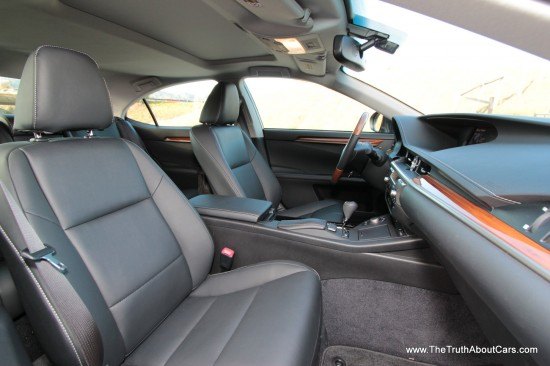




















































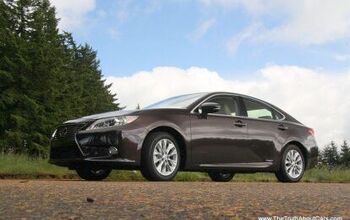
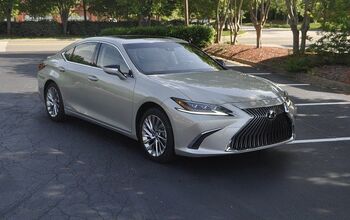
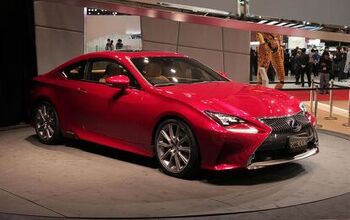
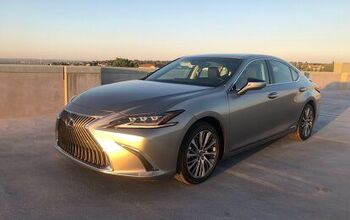











Comments
Join the conversation
This car was made for people who don't want to think about cars and have the money to make it so. Now with an extra helping of extreme fugly so that other drivers can spot them as they heave into view and avoid the ADD real estate agents piloting the helms. Beyond sad. Another carbuncle on the automotive landscape.
More hard plastic than even previous generation? That's very disappointing considering the previous generation had more hard plastic than 02-06 ES. The ES from two generation ago really was the pinnacle in interior quality. Rich and thickly lacquered wood trim, almost no hard plastic, even areas where you never touch. Very soft leather.